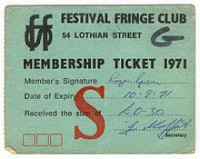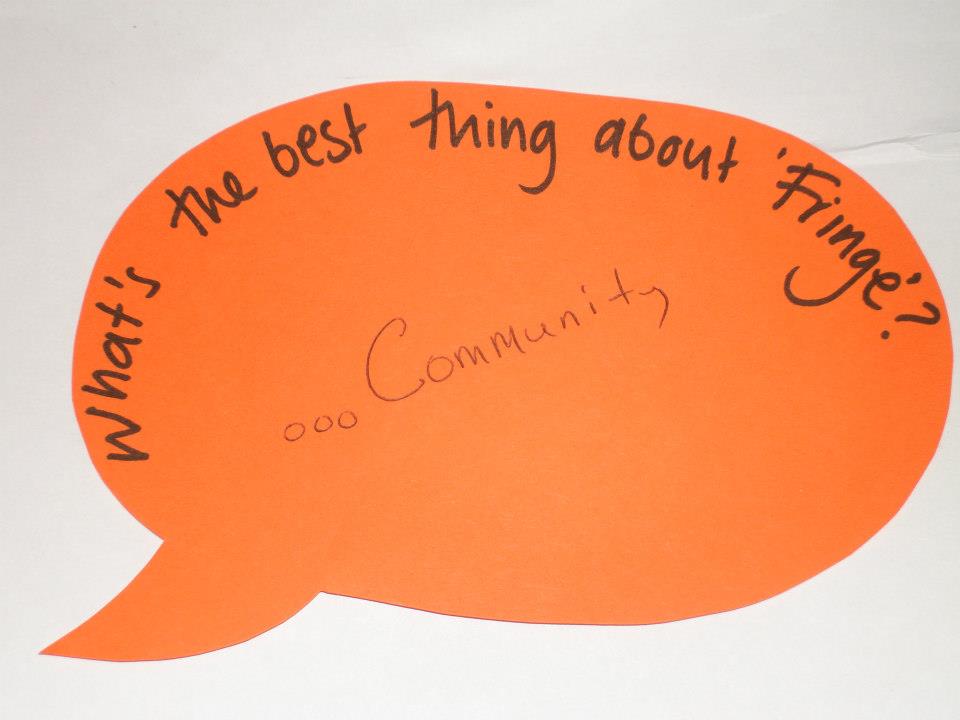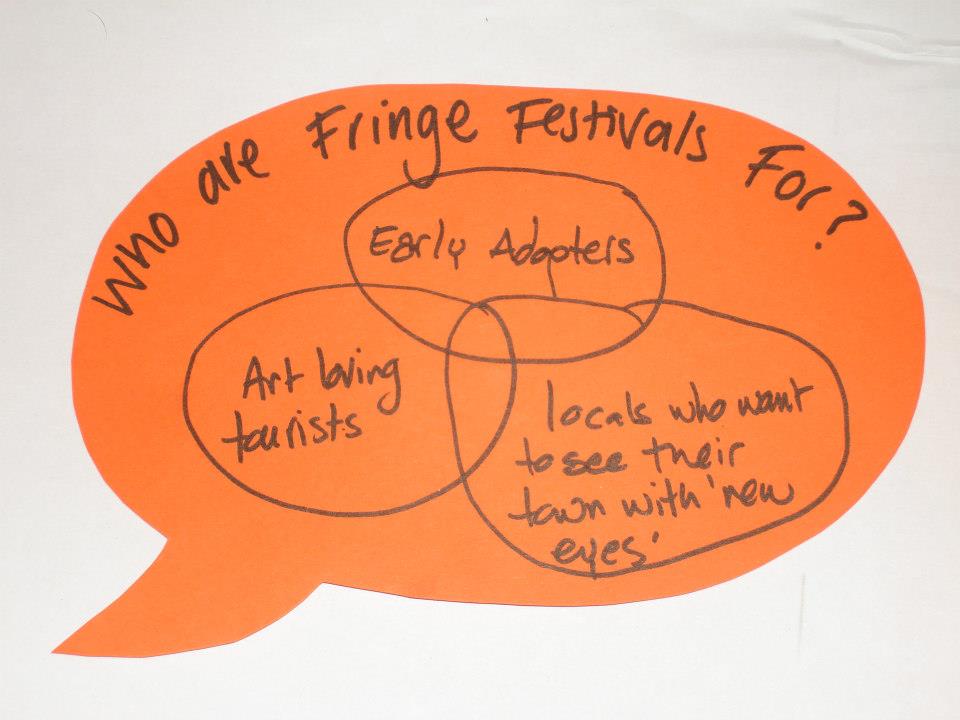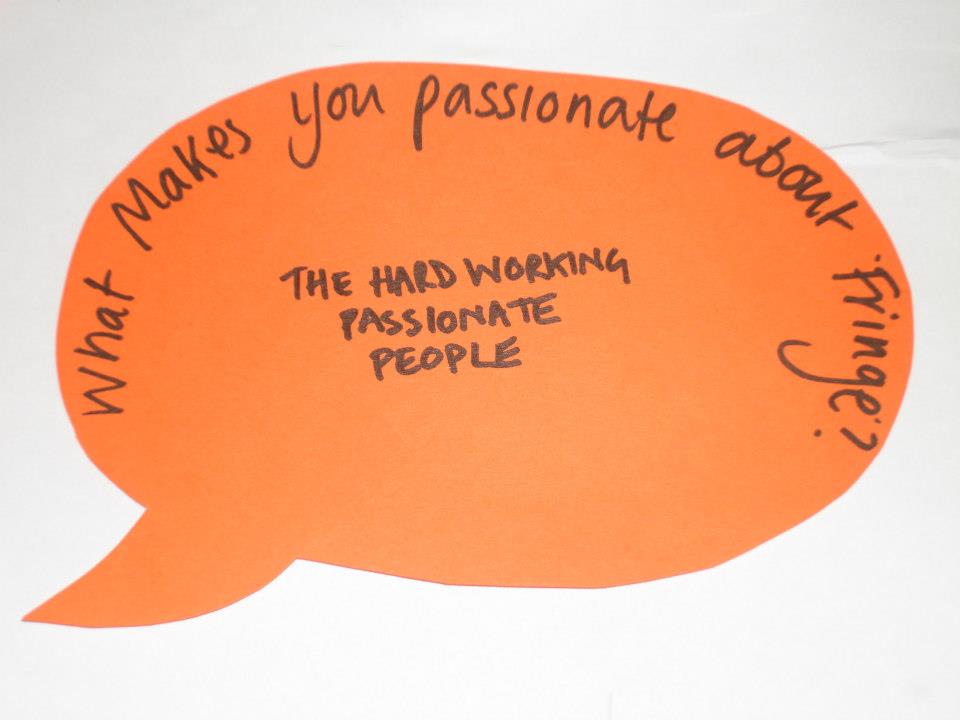‘Fringe’ comes from a ‘Fringe of another Festival’ or ‘Fringe Arts’. ‘Fringes’ administer shared risk: not a single pot of money coming from one place to produce a programmed event, it is about support, development, accessibility and everyone involved, including artists, venues, audiences, and funders, investing together in a creative platform and delivering a unique & organic occasion.
Fringe Festivals come in all different shapes and sizes; some are open access (anyone can take part by registering), first come first served, created by lottery, juried, part programmed or a mix of them all.
They are born from passion and hard work; a passion for development, for creating a platform and for seeing and realising new ideas and initiatives. Fringes are exciting sparks where stars are made; they are the ‘excellence’ of the future.

What is a Fringe Festival?
Should ‘Fringe’ be defined by description or attitude is a question that came up during a discussion about ‘What is Fringe?’.
When answering this question, one needs to consider that each Fringe Festival has its own identity, political agenda, unique structure and spirit; however, one Fringe Festivals’ ethos would not necessarily fit with another’s. It is difficult to encapsulate what Fringe means as one size does not fit all. Some people believed that if Fringe is defined it is not a Fringe anymore as by its very nature it defies definition.
It was important for us to understand who we are defining the word Fringe for; performers, venues, stakeholders, audiences, media, potential funders or all of these? We concluded that Fringe could not be defined by belief or structure alone. Fringe by its very nature is open access, through its registration process or the fact that they can be generated anywhere. If the word was characterized with too many criteria it would become exclusive, which misses the point of the Fringe Festival ethos.
The fundamental difference between a Fringe and a programmed Festival is mainly financial and the direction of the money streams. It is about who pays the artists. Fringe artists will often invest in their own Festival attendance and pay themselves from their own ticket sales or by any fundraising undertaken in the run-up to the Festival. A programmed Festival will invite an artist or group and pay them directly for their attendance; the Festival will then take the box office revenue.

What Does ‘Fringe’ Mean?
A Fringe Festival is a ‘Fringe of another Festival’ or a ‘Festival of Fringe Arts’. Fringe Festival bodies administer shared risk; it is not one large pot of money coming from one place to produce a programmed event, it is about support, development and accessibility and everyone involved, including artists, venues, audiences and funders, investing together in a creative platform and delivering a unique and organic occasion.
There are so many different types of Fringe Festival across the globe, some are associated with a programmed Festival and some stand-alone. They range from programmed, open access, juried, lottery, first come first served. Some have a political agenda; some serve a need for performers in the local area; some are set up to bring international work to new audiences. The Fringe Festival sector is difficult to define; however, we do know that no two Fringe Festivals are the same and they never repeat themselves.

Fringe means…
A Fringe is a grassroots Festival with the freedom to celebrate and exchange. It’s a Fringe of a Festival or a Festival of Fringe Arts made possible by the people who take part. Developed organically across the globe, they are unique in style and form every time they open. A Fringe Festival exists to serve the participating artists and audiences through building awareness. They professionally umbrella an accessible development opportunity by administrating a programme of events and creating a platform and marketplace for new and established art forms. They are constituted through innovation and creative expression. The Fringe ethos is, ‘If you want to do it you can… Fringes offer an alternative!’

